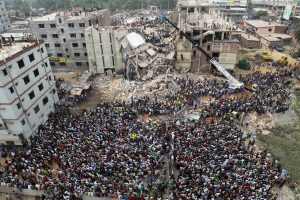A decade has passed since the fateful morning of April 24, 2013, when Rana Plaza, a multistory building in Bangladesh that housed several garment factories, came crashing down. The collapse claimed the lives of 1,134 individuals and left thousands injured, casting a dark shadow on the fashion industry.
The devastating tragedy exposed the grim reality of unsafe working conditions and labor rights violations in the global garment trade, triggering a global outcry for change.
Ten long years have gone by, but the trauma and wounds inflicted by the Rana Plaza tragedy are still fresh for the survivors and families who suffered immeasurable loss. Among them is Yanur Akhter, 25, a former helper at the Eather Text LTD garment factory on the sixth floor at Rana Plaza. She lost her mother, who used to work on the seventh floor, in the accident.

Yanur Akhter holding a photo of her late mother, Anowara Begum, who passed away in the Rana Plaza tragedy. Photo by Piyas Biswas.
Akhter herself narrowly escaped death. A large concrete beam fell on her and she was trapped under the debris for 18 long hours.
“When I was trapped under a concrete beam, there were four bodies on my left leg. I was not sure if they were alive or not,” she told The Diplomat.
“I was suffering a lot out of thirst. I was screaming for water. I was feeling suffocated and I still suffer from asthma. It was so dark, I couldn’t tell if it was day or night. All I could hear were people crying and screaming for help.”
Following the collapse, Akhter spent 2.5 months in the hospital, undergoing treatment for her injuries. However, doctors informed her that full recovery would not be possible, and she would need to continue taking medication. Her lower body had suffered nerve damage, and her spinal cord was severely affected, with several parts being surgically removed from her ankle to her waist for treatment.
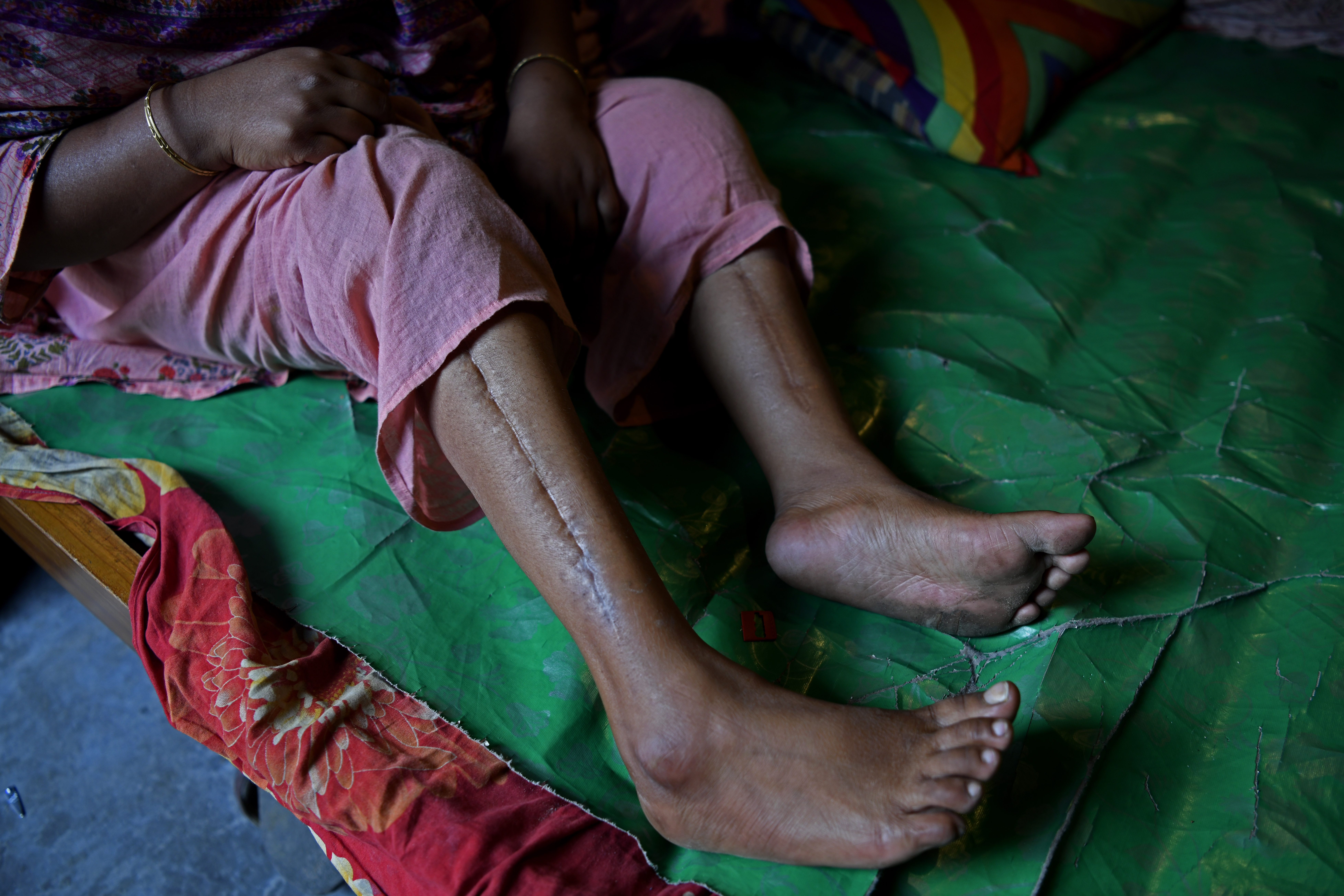
The current state of Yanur Akhter’s injured leg. Photo by Piyas Biswas.
“After the accident, I am unable to do any work due to my injuries. Can’t do many of the house chores. I don’t have any choice other than sitting at home with these injured legs,” Akhter added.
She now lives with her day-laborer husband and 3-year-old son in Savar on the outskirts of Dhaka.
Most of the survivors of the Rana Plaza collapse are living in poverty, grappling with the lasting impact of severe physical injuries that make finding employment challenging. A recent survey by ActionAid Bangladesh (AAB) revealed that around 54.5 percent of Rana Plaza survivors are currently unemployed, with 89 percent of them being jobless for the past five to eight years.
“Some survivors now beg for a living. Our primary demand is for all survivors to receive compensation for their lost lifetime income, amounting to 48 lakh taka [4.8 million taka, about $45,000] each,” said Mahmudul Hasan Hridoy, president of the Rana Plaza Survivors Association of Bangladesh.
“The same individuals who own the garment factories also hold positions in the Parliament and cabinet. There is no representative of the workers in the Parliament. The rulers are exploiting,” he added.
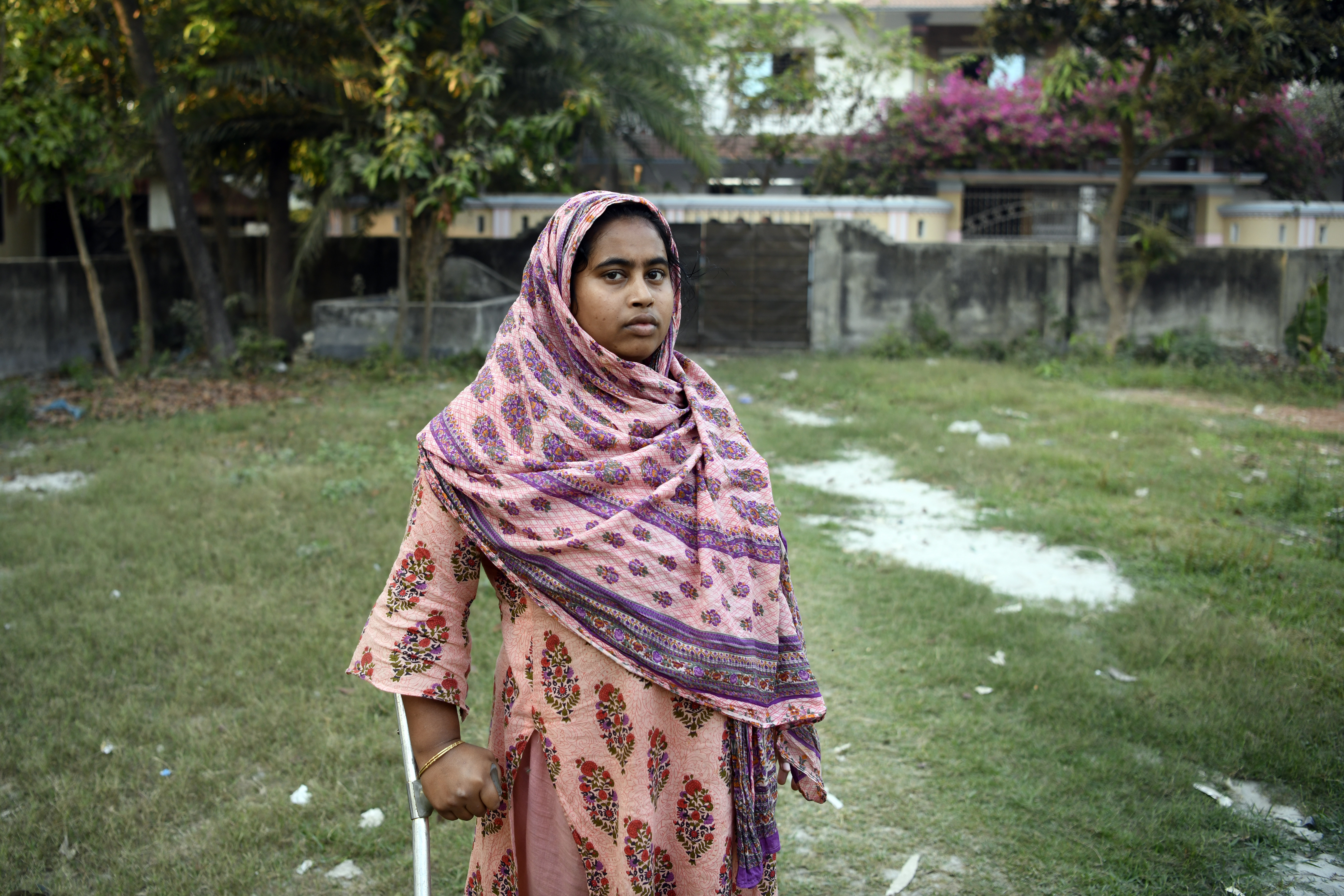
Yanur Akhter poses for a portrait in her yard. Photo by Piyas Biswas.
Changes in the RMG Industry
Bangladesh is a major sourcing destination for over 300 global retailers, including well-known brands like Wal-Mart, Tesco, M&S, H&M, Zara, Adidas, JC Penny, IKEA, LI & Fung, Uniqlo, and more. These brands have all established liaison, procurement, or sourcing offices in Dhaka. The country’s Ready-Made Garment (RMG) industry accounts for 80 percent of its annual exports.
Since the Rana Plaza collapse, Bangladesh’s RMG industry has made significant progress in areas such as factory safety, infrastructure risk mitigation, worker health, empowerment, and working environment. The Accord on Building and Fire Safety in Bangladesh and the Alliance for Bangladesh Worker Safety, both foreign buyer initiatives, have played a pivotal role in driving these improvements.
The Alliance ended its tenure in December 2018 and handed over its charge to Nirapon, a non-profit organization. On June 1, 2020, the RMG Sustainability Council (RSC) took over the Accord operations and started functioning as a safety monitoring body in the RMG sector in Bangladesh.
But despite the significant improvements made in the RMG industry, several problems still persist.
Prior to the Rana Plaza collapse in 2013, the minimum wage for garment workers in Bangladesh was 3,000 taka (around $28 as per current exchange rates) per month, which was later increased to 5,300 taka in November 2013 and 8,000 taka in 2018.
“My monthly salary is 10,000 taka. And if I do overtime the amount goes to around 13 to 14,000 taka,” said Rozina Begum, 25, a junior swing operator working in a garment factory. “With this low wage, it is really tough to make it through a full month. Somehow we manage it, and it is really a struggle.”
“My daughter and I can’t even afford our own room to live in,” Begum continued. “The cost of everyday things has gone up and it is actually tough to meet all the basic necessities with this salary.”
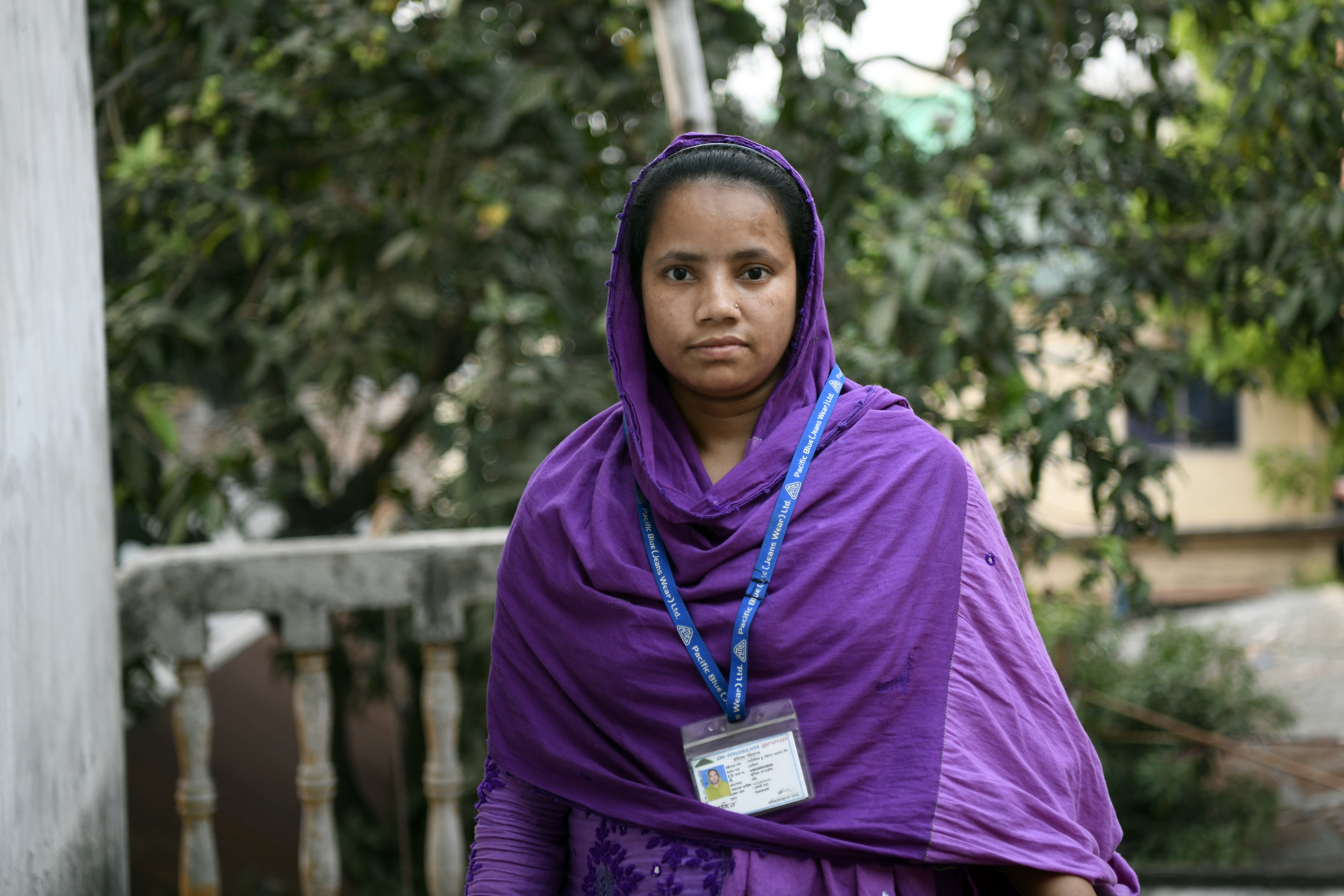
Rozina Begum, a current garment worker, poses for a portrait. Photo by Piyas Biswas.
Workers often work overtime to earn extra wages to support their families. However, this leads to working long hours, which has detrimental impacts on their health.
“Usually, my shift starts at 8 a.m. and is supposed to end at 5 p.m. However, some days we work overtime. On those days, we might finish work at 7 p.m., 8 p.m., or even 10 p.m. So 9 to 14 hours of work depending on the overtime.” Begum shared.
Since the tragedy, there has been some improvement in the ability to form trade unions to protect workers’ rights. However, obstacles still exist. While workers are technically free to form trade unions, many are hesitant due to intimidation and fear of job loss. Registering new trade unions is also challenging, with frequent rejections of registration requests.
“The Department of Labor registrar of new trade unions has problems in their practices when it comes to registering new trade unions. A lot of obstacles come from the powerful owner’s side as well,” said Amirul Haque Amin, president of the National Garments Workers Federation (NGWF).
Workers also experience challenges when they ask for work leaves. Sick leaves are counted as absences, he claimed.
The COVID-19 pandemic has worsened the challenges faced by workers in the RMG industry, with factory closures and job losses due to reduced demand for clothing. Many workers have lost income and struggled to support their families.
In response, the Bangladeshi government and international organizations have launched initiatives to support RMG workers, such as the International Labor Organization establishing a program to provide emergency cash transfers to workers who lost their jobs due to the pandemic. However, these initiatives have encountered challenges, including limited funding and difficulties in reaching all affected workers.
Amin mentioned that workers in Bangladesh do not receive adequate compensation and treatment facilities for workplace injuries. However, a pilot program called the Employment Injury Scheme (EIS) has been launched with support from the German and Dutch governments.
The EIS is a social protection program that provides compensation for medical treatment, rehabilitation services, and income loss due to occupational injuries or diseases. The Ministry of Labor and Employment, in collaboration with the ILO, launched this scheme which will cover 4 million garment workers in Bangladesh. Nine out of the 300-plus foreign retailers that source garments from Bangladesh have voluntarily contributed to the EIS.
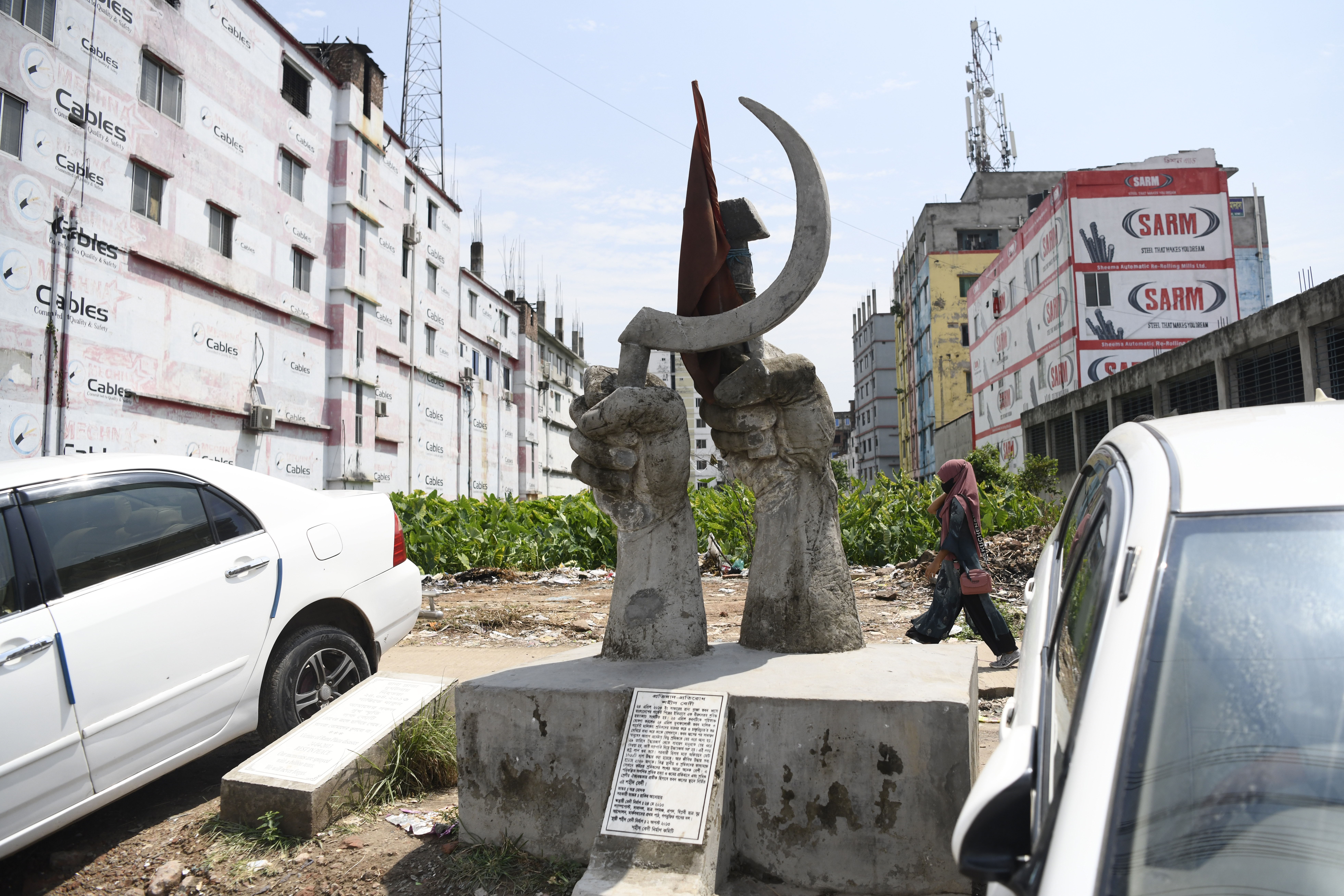
A monument was erected in memory of the victims of the Rana Plaza tragedy. Photo by Piyas Biswas.
A ‘Massive Transition’ in Workplace Safety
President of the Bangladesh Garment Manufacturers and Exporters Association (BGMEA) Faruque Hassan claimed “We have conducted thorough audits of the fire, electrical, and structural safety of every garment factory and have adopted a zero-tolerance policy toward safety lapses. A massive transition occurred after the Rana Plaza tragedy. We have closed down many factories that were deemed unsafe.”
“We have taken the Rana Plaza accident as a lesson and [have been] working very strictly on safety since then. For that, the buyers also gained confidence in us. In terms of safety, we think the Bangladeshi factories are the best,” he said.
Efforts by buyer unions (like the Accord and Alliance), the government, and the RMG Sustainability Council (RSC) have indeed resulted in safety measures being implemented to enhance worker safety in garment factories. However, subcontractor factories, which are contracted for specific production stages, are not yet part of these safety initiatives. Reportedly, these factories often operate independently and have lower safety standards and potential labor violations due to a lack of resources and oversight of larger factories.
“These subcontractor factories should also be brought under the safety development programs,” said Amin.
Yet Hassain said that the authorities “strictly monitor the subcontractor factories.” He added, “We have instructed our member factories to only hire subcontractors that comply with safety regulations and take approval from the retailer client before hiring.”
International brands source from Bangladesh mainly due to comparatively low labor and production costs. However, this often leads to factory owners cutting costs in ways that exploit workers, who receive low wages and struggle to make ends meet coping with rising prices.
The Rana Plaza disaster will forever remain a haunting reminder of the human cost of unsafe working conditions and exploitative practices in the global garment industry. While there has been progress over the past 10 years, with initiatives and efforts by various stakeholders, much work remains to be done to ensure fair and respectful treatment of workers.
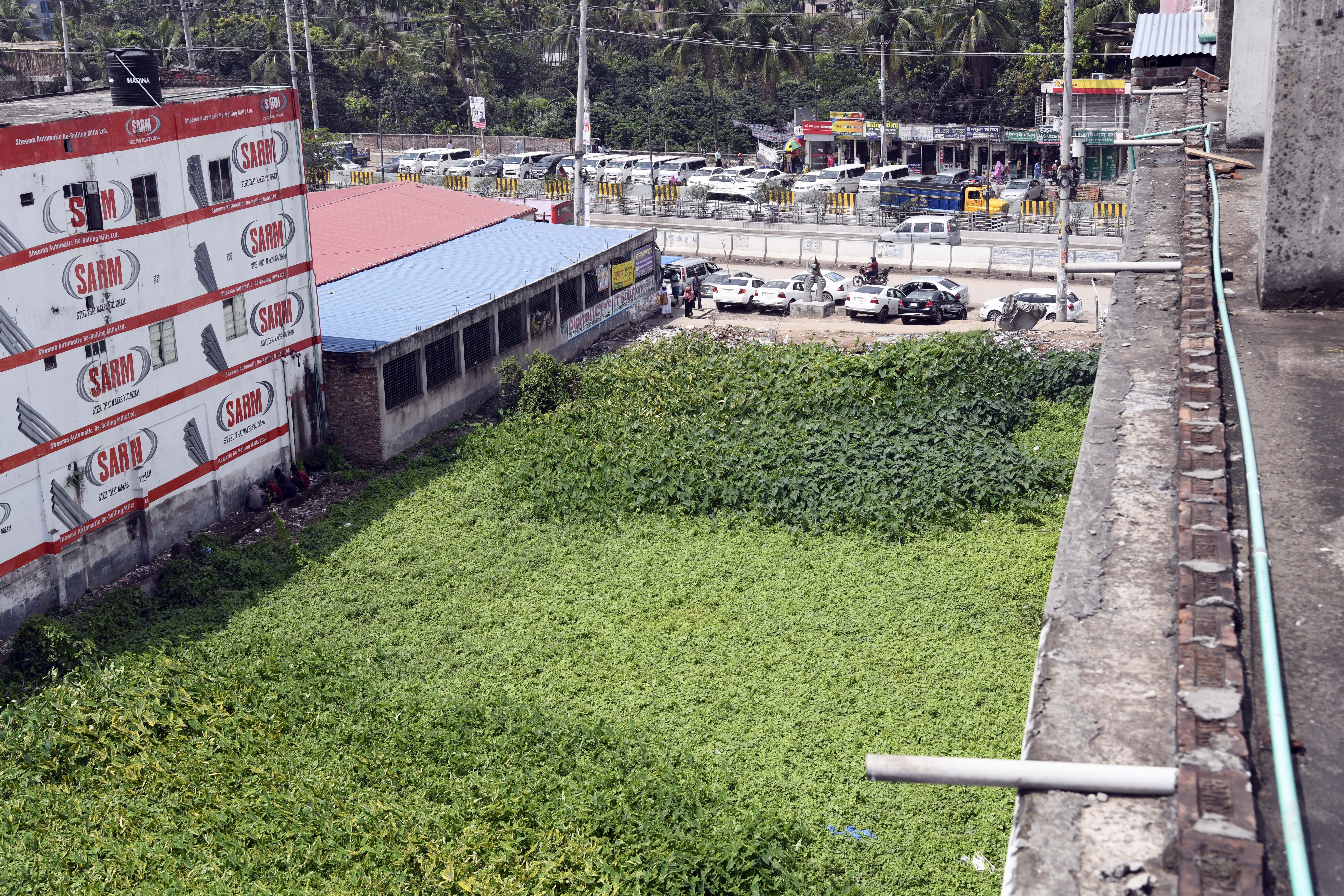
The current state of the land where Rana Plaza used to stand. Photo by Piyas Biswas.













